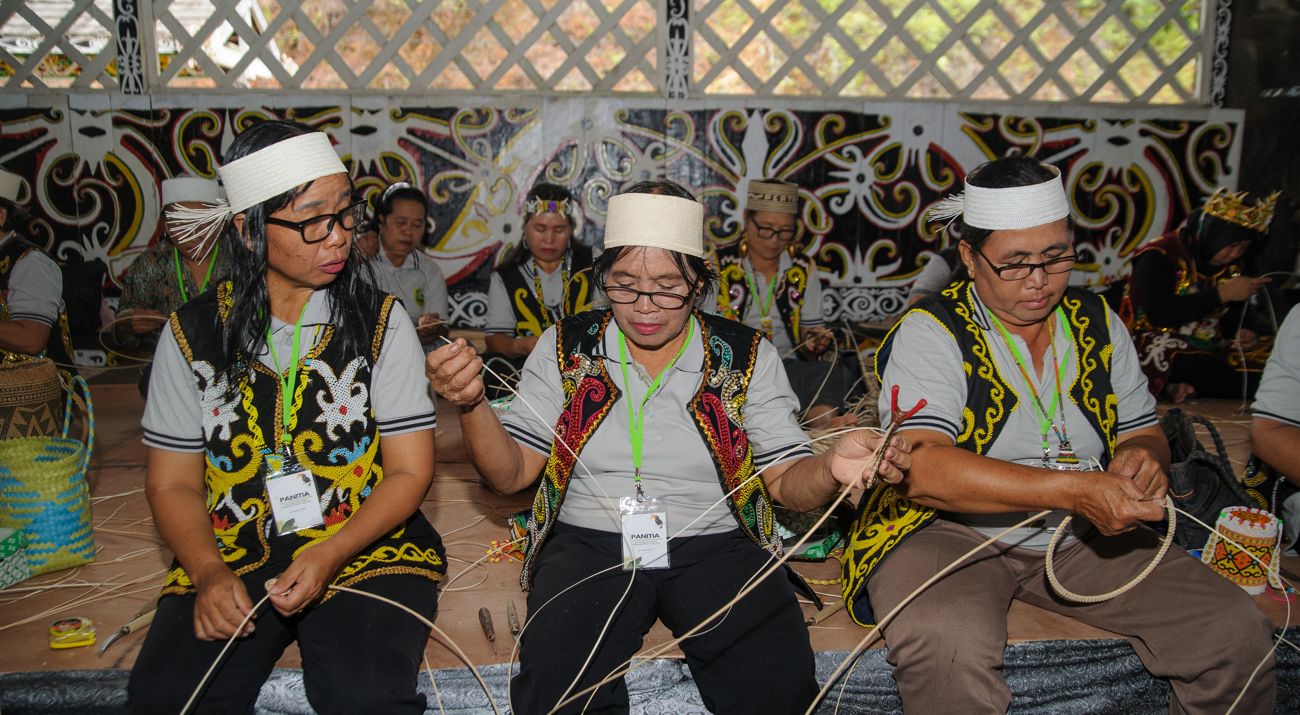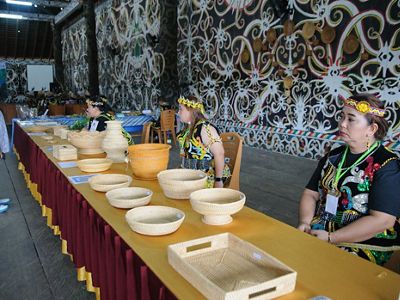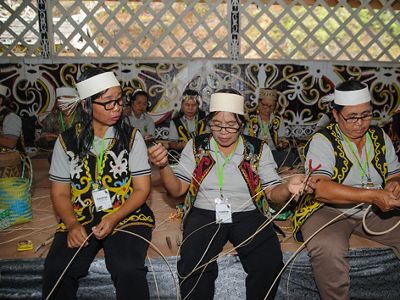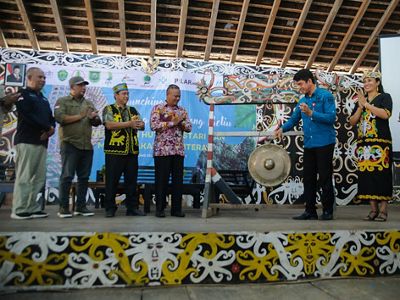
Media Contacts
-
Retno Sari
Communciation Specialist Terrestrial Program
Yayasan Konservasi Alam Nusantara
Email: retno.dianingsari@ykan.or.id
Berau: East Kalimantan is the second rattan-producing province in Indonesia after Central Kalimantan. However, as one of the largest producers, rattan has not yet become a regional superior commodity related to Non-Timber Forest Products (NTFPs). The majority of rattan shipped outside Kalimantan Island is currently raw rattan that is undervalued because it has no added value.
Ironically, the largest rattan industries are located in Gresik, Lombok, and Cirebon districts, even though these areas are not rattan producers. "I am amazed, goosebumps, and tears in my eyes, their handicrafts are very delicate, the standard is international," said Assistant 1 Regional Secretary of Berau Regency Muhammad Hendratno when giving a speech at the launch of Rattan Village Ecotourism in Long Beliu Village, Kelay District, Berau Regency, East Kalimantan on Thursday, January 16, 2025.

Muhammad Hendratno said the launch of Kampung Rotan ecotourism could be the first step in reviving the community-based rattan industry and giving a strong message to preserve the environment (forest). "This is a breakthrough, the raw materials for handicrafts are abundant and easily available around the village," he said.
The rattan potential of East Kalimantan and North Kalimantan is quite significant. Based on research conducted by the Nusantara Nature Conservation Foundation (YKAN) and partners from August to October 2024, it was found that the region has 40 types of rattan. From these findings, the most widely used by the community for commercial needs are the types of Manau Rattan, Sabut Rattan, and Sega Rattan.
Long Beliu Village itself enthusiastically welcomed the rattan revival initiated by the regional government. This village has rattan that is easily found not only around the village forest, covering an area of 4,633 m2 (KLHK Decree 6259 TAHUN 2024), but also along the Gie River, Kelay River, and Peteng River areas that surround the village.
Initially, rattan was only traditionally processed into building materials, certain handicraft materials, and food sources (umbut). However, everything changed at the end of 2024. As one of the recipients of performance-based carbon incentives from the World Bank, Long Beliu Village has moved to focus on the management and development of rattan derivative products.

Long Beliu is now focusing on managing and developing rattan derivative products. Incentives from the Forest Carbon Partnership Facility-Carbon Fund (FCPF-CF) scheme have inspired the community to maximize their local potential, which has two direct impacts: the preservation of the forest and the improvement of community welfare.
Rattan-based Ecotourism
The government of Long Beliu Village, in collaboration with YKAN and Yayasan Pilar Indonesia, and supported by the local government through the KPHP Berau Barat, is developing Rattan-Based Ecotourism.
Through Rattan Village Ecotourism, tourists will be presented with tour packages ranging from river cruises using ketinting, seeing rattan weaving production houses and weaving practices directly with craftsmen, forest tracks, village tours, and culinary tours typical of the Dayak Gai and Kenyah tribes. "Our village is ready to welcome travelers with our extraordinary natural and cultural wealth," said Long Beliu Village Chief John Patrik Ajang on the same occasion.
The village government targets to have a rattan production house in their village by 2025. The production house was built to ensure the availability of raw materials for rattan weavers, and a village gallery was constructed to promote and market various rattan products. "Rattan weaving is a cultural heritage and ancestral legacy inherent in our culture," said John.

The rattan management business unit in Long Beliu village is planned to be managed by the NTFP and Environmental Services Social Forestry Business Group (KUPS) under the supervision of the Village Forest Management Agency.
Forest-saving rattan
YKAN Terrestrial Program Senior Manager Niel Makinuddin said rattan is a potential alternative livelihood. Especially, if managed professionally and sustainably. "From the tuber to the stem, everything can be utilized," Niel said on a separate occasion.
Niel also explained that the sustainability of rattan can save the forest. Rattan can grow and be of good quality if there is a stand of trees as a place to propagate. Thus, the community will indirectly be more responsible for maintaining the stands of trees in the forest where the rattan they cultivate can grow.
Historically, the people of Kalimantan have firm cultural ties to rattan. This is especially true for the Dayak and Kutai tribes, whose daily utensils are mostly made from rattan.
YKAN, through its Community Forest Conservation strategy, encourages the development of the rattan industry through capacity building and facilitation of relevant stakeholders. "We believe that sustaining the income of communities around the forest can protect the forest for a long time," said Niel.
Yayasan Konservasi Alam Nusantara (YKAN) is a scientific-based non-profit organization that has been present in Indonesia since 2014. With the mission of protecting lands and waters as life support systems, we provide innovative solutions to realize the harmony of nature and humans through effective natural resource management, prioritizing a non-confrontational approach, and building a network of partnerships with all stakeholders for a sustainable Indonesia. For more information, visit ykan.or.id.

